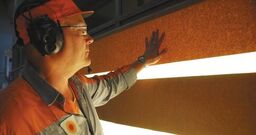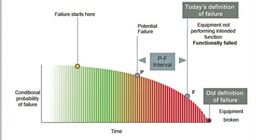Folding Boxboard: When Will North America Get on Board?
CLAY ENOS, FISHER INTERNATIONAL
Today, more than 75 percent of bleached virgin cartonboard manufactured in Europe and Asia is folding boxboard (FBB). With broad use in liquid packaging, food service, and folding applications, FBB is the preferred substrate versus solid
bleached sulfate (SBS) in most regions around the globe. Yet, in North America, FBB production is nearly non-existent. Used in limited amounts, the North American FBB demand is fulfilled mostly by imports.
With the rest of the world showing a clear preference for FBB over SBS, why has North America not adopted it as the “go-to” for cartonboard? More importantly, will this change?
GLOBAL CARTONBOARD MARKET
As shown in Fig. 1, the global cartonboard market is comprised of the following grades:
• Coated Recycled Board (CRB)
• Uncoated Recycled Board (URB)
• Folding Boxboard (FBB)
• Solid Bleached Sulfate (SBS)
• Solid Unbleached Kraft (SUK)
The two bleached virgin products, FBB and SBS, have broad and overlapping end uses. Globally, these products are used for liquid packaging (e.g., aseptic, gable top); foodservice (hot/cold cups, plates, carryout); and folding applications (beauty/toiletries, food packaging, cigarettes, consumer electronics).

Where SBS is being used in North America, the rest of the globe uses FBB (Fig. 2)—and for good reason. FBB has an engineered, multi-ply structure that allows for the following desirable characteristics versus SBS:
• Optimization of functional and technical properties
• Maximal use of low-cost materials
• A favorable sustainability profile
• Lighter weight packages for similar stiffness properties
As the global standard, FBB offers brand owners the additional benefit of substrate consistency across regions. While FBB use in North America has been limited, it is showing growth. Recent imports of FBB to the US have been nearly 400,000 metric tpy, although roughly one-third of this volume should be considered as commercial print and graphic applications rather than packaging.
THE PARADOX
If FBB offers a number of advantages over SBS, why do North American mills appear reluctant to produce it? A closer look reveals some possible answers. Compared to its peers, North America has older cartonboard assets. What’s more, very few of these cartonboard machines have multi-ply capability, a requirement in FBB production.

Surely, existing paper machines can be converted, but the short-term capital implications often overshadow the potential for long-term cost benefits. While a valid concern, this argument ignores two important points in favor of FBB production in North America. First, wood fiber is an essential component in FBB manufacture and North America has a lower average wood fiber price when compared to Asia Pacific and Europe, a clear advantage in pulp manufacturing costs. Second, electricity cost is critical to the production of energy-intensive mechanical pulp, and North American electricity costs are also highly competitive.
PERCEPTION VERSUS FACT
Benchmark data residing in the FisherSolve Next™ platform is even more revealing, allowing us to consider manufacturing costs of a European FBB machine as if it had been “transplanted” to the midwestern United States, and to compare this machine within the cost curve of North American SBS incumbents.
Even with conservative modeling assumptions for inputs including capacity, unit pricing (labor, raw materials, and energy), and yield advantages, an FBB machine could hold a commanding cost position in North America, easily justifying the capital cost of its installation. Here’s how.

When conducting a comparative analysis from an FOB mill site perspective, a Midwest FBB producer might fall to the far right of the incumbent SBS cost curve (Fig. 6). But that doesn’t tell the complete story. If we add delivery cost to a major city like Chicago, our Midwest FBB mill begins to show a modest competitive advantage (Fig. 7). Better still, when yield is factored in, the lighter weight of FBB drives its cost advantage even higher, positioning it as an extremely attractive alternative to SBS (Fig. 8).
Given the rest of the world’s preference for FBB, and the demonstrated value of conversion, are there true “pain points” preventing North American migration and adoption? Or are they just perceived objections? And if so, what will it take to for North American manufacturers to get on board?
JUST A GENTLE NUDGE?
It’s possible that a single activity could provide the “gentle nudge” that will create a domino effect to move the region toward adoption of FBB. Some considerations that could move the dial:

• One manufacturer acting as a first mover could demonstrate a competitive lead that will encourage others to follow suit.
• Consumer (and converter) price pressure in response to an economic downturn could provide the push needed to move to a smarter production model.
• Continued acquisition of virgin capacity by foreign investments could lead to a scarcity of chemical pulp in North America.
• The possibility that a major brand owner will require consistency of substrate across the globe—including in North America.

While it is impossible to determine which of these factors might trigger a market shift, one thing is certain: In our increasingly global industry, it’s no longer prudent for North America to go its own way when it comes to FBB versus SBS. Those with their fingers on the pulse of this change will be the ones most likely to benefit.
Clay Enos is director of business intelligence consulting, Fisher International. With deep expertise in the pulp and paper industry, Fisher can arm companies with knowledge that will help them understand their strengths and weaknesses, stave off challenges, and better position themselves for long-term growth. Visit www.fisheri.com or email [email protected].




